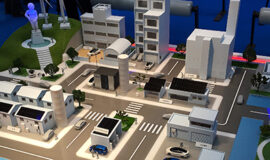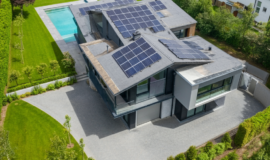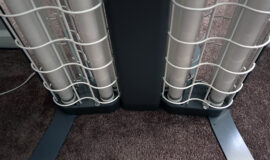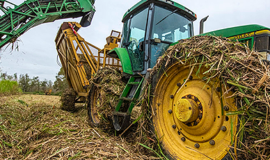Types of Hydropower Plants
The water from streams and rivers has long been used for the production of mechanical energy. Hydropower was one of the first renewable energy sources and up until 2019, it was the largest renewable source accounting for more than 18 percent of the world’s total power generation.
Hydroelectric power plants use the kinetic energy of water to produce electricity and so they are usually placed near a water source. There are several types of hydroelectric power plants:
– Hydropower plants with a large elevation drop
– Hydropower plants with a medium elevation drop
– Hydropower plants with a small elevation drop
Hydropower plants with a large elevation drop
These hydropower plants have an altitude difference of over 300 meters and they use so called Pelton turbines which are for speeds between 2 and 50 turns per minute. Pelton turbines, or also called Pelton wheels, are tangential flow impulse turbines which use the pressure energy of water to tangentially make it rotate. The Pelton turbines were invented in the 1870s and are still used today.
Hydropower plants with a large elevation drop can be found on the Alps or other mountain regions. The water flows into the Pelton turbine through 1-4 nozzles placed tangentially along the circumference of the water circuit with blades. The jet of water to the top of the nozzle where it divides into parts where a tangential force appears on the water circuit.
Hydropower plants with a medium elevation drop
Hydropower plants with a medium elevation drop are used for height differences between 30 and 300 m, and they use Francis turbines for a speed range from 50 to 500 turns per minute. The Francis turbine was invented around 1855 and it’s also still used today. Her design is flexible and can be altered to different head heights and flow rates. The Francis turbine is a reaction turbine with inward-flow and combines radial and axial flow concepts. These turbines achieve 95% efficiency and that is why they are the most common water turbine used today.
These hydroelectric power plants use a large reservoir (lake) which is surrounded by a concrete dam. The dam is usually built along the entire width of the river, usually in the mountains. A large amount of water is behind the dam.
Hydropower plants with a low elevation drop
Hydropower plants with a low elevation drop are used for height differences under 30 m and they use Kaplan turbines or sometimes Francis turbines which are for speeds between 500 and 800 turns per minute. The Kaplan turbine is a turbine of the propeller-type which has adjustable blades. It was developed in 1913 by the Austrian professor Viktor Kaplan, who created a combination of propeller blades with wicket gates to achieve efficiency over a wide range of flow and water level. The Kaplan turbine represents an evolved version of the Francis one.
When using these plants, energy is usually obtained from the flow of the river (flow power plants). These turbines are made to be able to handle large amounts of water at low pressure and they don’t have a reservoir ie lake.





